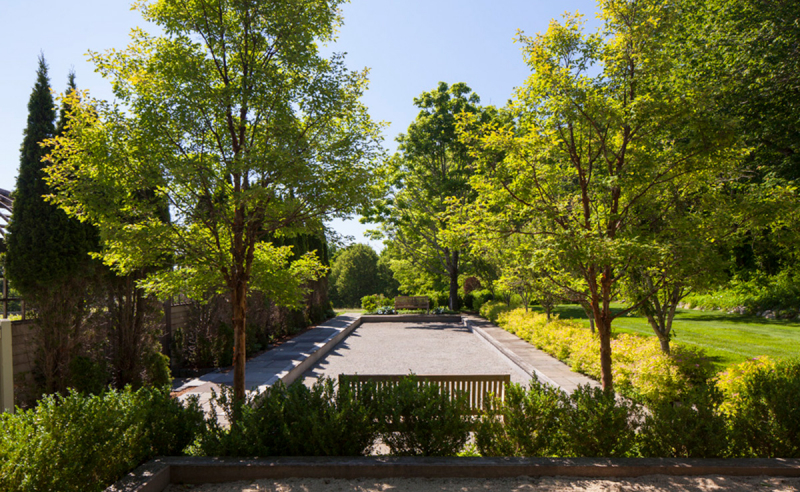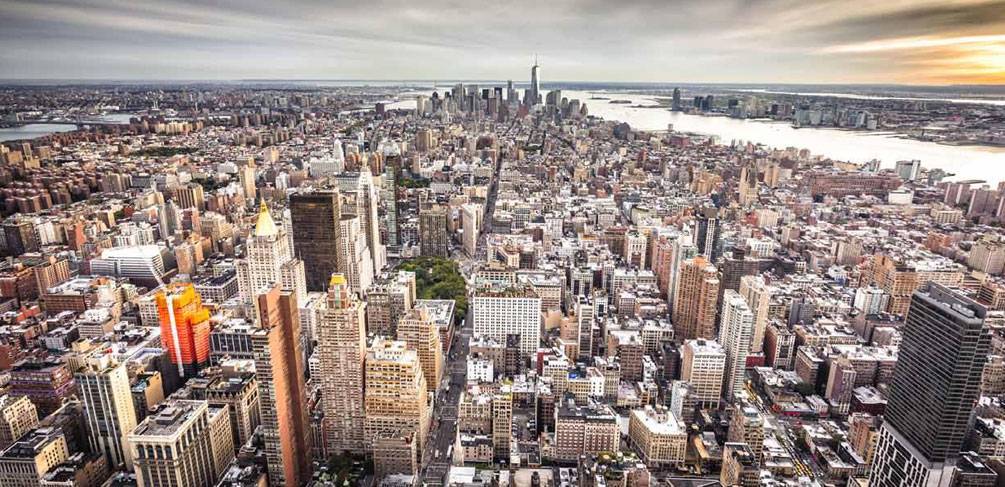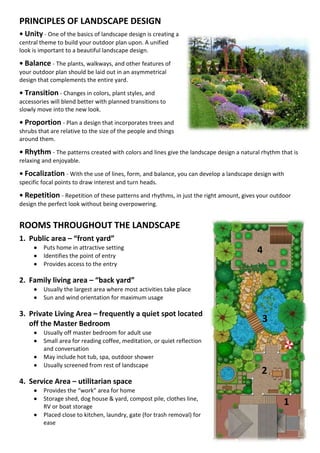Landscape Design Can Be Fun For Everyone
Landscape Design Can Be Fun For Everyone
Blog Article
Getting The Landscape Design To Work
Table of ContentsExamine This Report about Landscape DesignLandscape Design - An OverviewThe 25-Second Trick For Landscape DesignThe Landscape Design PDFs10 Simple Techniques For Landscape Design
Formal design motif. Debt: Gail Hansen, UF/IFAS The backyard is an expansion of the home where a variety of activities happen. A lawn can usually be split into three locations: public (the front lawn), personal (the back yard), and solution (normally the side lawn). The location of task areas depends mainly on the sort of location, the size of room required, the kind of activity, and the desired distance to other tasks and frameworks.The outside wall surface of your house frequently functions as the first wall or beginning point of an exterior room. Inappropriate uses need to be separated, and relevant activities, such as cooking and eating, must be created to make the backyard more reliable and delightful. When using hardscape to develop rooms, make use of building and construction material comparable to that used in the home for connection from your home into the yard.
Linked rooms. Credit History: Gail Hansen, UF/IFAS Using comparable hardscape features and duplicating plants pulls the eye around the yard. Important points along the road can be highlighted with growings or functions that draw attention and encourage activity in a certain direction. Relocating along the course takes a person from one location to the following and allows the customer to have a range of experiences.
A Biased View of Landscape Design

For mental comfort plants are used as physical or suggested barriers for privacy and safety and security. Physical obstacles block both the sight and accessibility to an area and consist of fencings, walls and plant hedges. Indicated obstacles, commonly reduced growing plants, block accessibility however not the view (Number 9). Other functions of plants consist of cleansing the air, stopping erosion and soil loss, retaining moisture in the soil, and returning natural issue to the dirt.
Physical and suggested barriers. Credit Score: Gail Hansen, UF/IFAS For these reasons, the kinds of plants to be utilized (such as trees, shrubs, or groundcovers) need to be selected in the onset of planning (Landscape Design). Plant kinds are selected for their practical abilities to ensure that their future function and required area can be considered at the very same time

Things about Landscape Design
Each plant mass is in front of, behind, or next to, another mass. Credit Rating: Gail Hansen, UF/IFAS Duplicating plants within a mass and duplicating masses with similar plants connects the yard with each other. The specific plant characteristics must be thought about to effectively layer and mass plants.
All plant make-ups start with the major framework plants, the huge, mainly evergreen history plants-such as the trees and big hedges. These plants different or enframe spaces, control the dimension of the area, and provide the starting factor for choosing the appropriate attributes of the 2nd layer, midground plants, for massing and infill.
Important points in the yard need to be highlighted by the usage of one-of-a-kind plants, distinct structures, or garden accessories. Noting limits or entryways to areas can be done with entrances, arbors, and actions, or with using one-of-a-kind and vivid plants. The form and/or design motif of the yard will usually assist establish the vital factors and how they need to be highlighted.
Various other essential places in the lawn are focal points, which is used to aesthetically organize a landscaped location. The kind of centerpiece often depends upon the seeing point of view. Different viewpoints or viewpoints can expose various compositions in the landscape that may need a selection of prime focus. Contrasting appearance, shape, dimension and color will catch and hold the eye.
Some Known Details About Landscape Design
Figure 13. Plant kinds. Debt: Gail Hansen, UF/IFAS After form, appearance is the following leading attribute of a plant; coarse, tool and fine textures can be link used for comparison and focus in the landscape. Form and structure both trump color in the yard for most of the year. Nevertheless, throughout certain seasons, shade will be one of the most noticeable characteristic of the yard.
The pleasurable fragrance of plants, the audio of wind in the trees, the sound and structure of her response water, and the shades and textures of sculptures, pots and yard furniture all include to the experience of the garden. One detail that is typically ignored is the result of light on the looks of the plants.

9 Easy Facts About Landscape Design Shown
It is very important to recognize the ultimate mature dimension of plants so they can be positioned in the right place and spaced correctly when they are mounted. Offering plants room to expand is a challenge since the common mature dimension is generally based on optimum growing conditions and the ecological problems of a website might trigger a plant to grow bigger or stay smaller.
Report this page